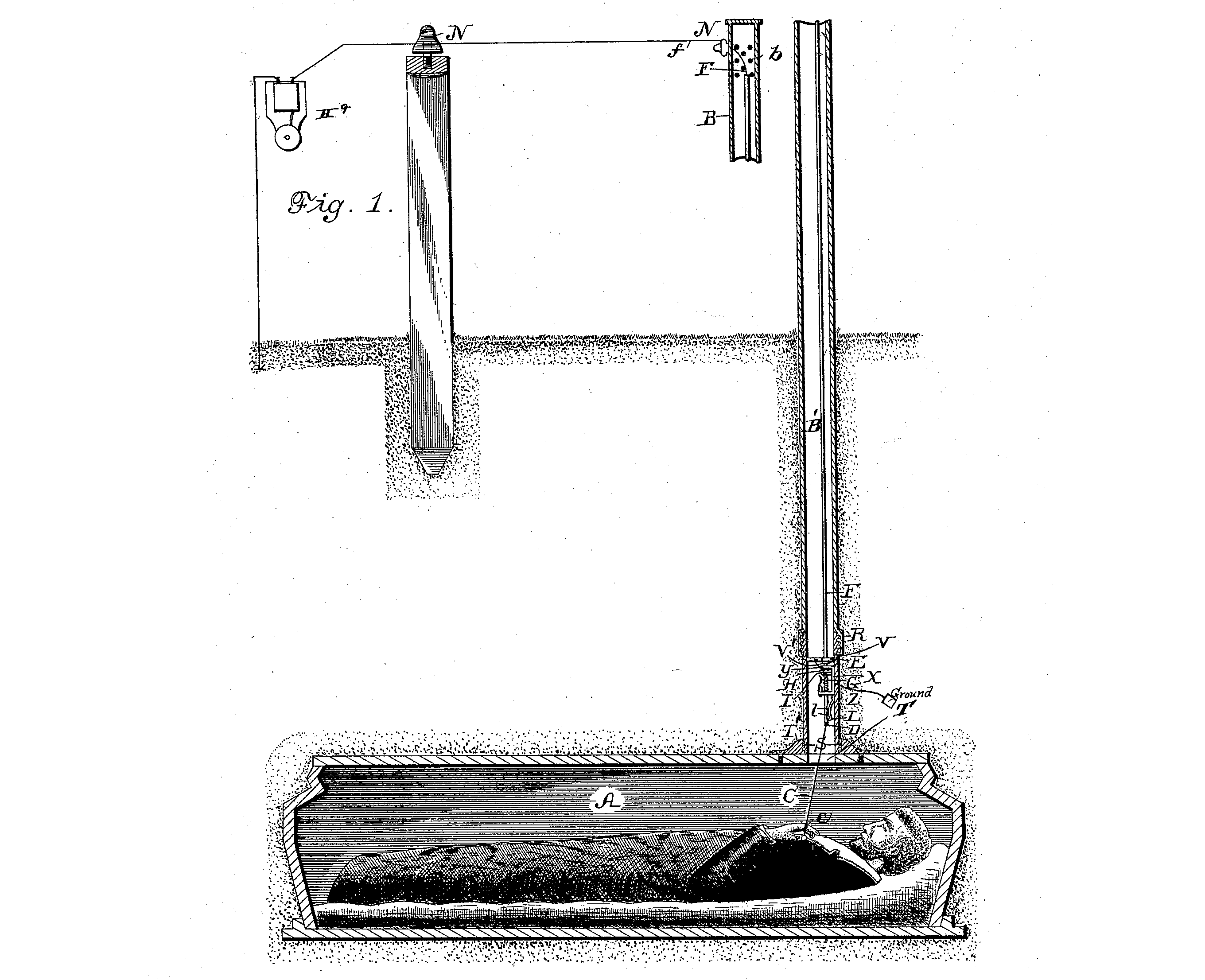
A Portfolio of Kansas City Inventors
In Case of Emergency, Drop Pants. Back in 1885, when Kansas City’s George C. Hale patented a rather unusual pair of suspenders, city fire departments were without the kinds of extension ladders used these days. Hale’s suspenders were designed to get around this problem; he claimed more than 100 feet of cord could be stitched into his suspenders for emergency use. “In the event of a person being confined to a burning building and having all of the usual means of escape cut off, “he wrote, “the cords can be disengaged from the suspenders and lowered to the ground to receive a rope, and thus enable the person to effect his escape.” At the time of his death, it was not-so-reliably reported that Hale was working on a sequel: the improved “Parachute Suspenders.”
Note: Batteries Not Included. George Hale’s preoccupation with disaster paled in comparison to William H. White’s. In 1891, the Topeka inventor patented a “Grave Annunciator,” which should have given those worried about being buried alive some solace. The device’s electrical circuit, actuated by the person fidgeting in the coffin or vault, rang a bell above ground to summon rescuers (see above). A vertical flue provided an air passage to the dearly departed, in case it wasn’t simply a false alarm.
A Seat-of-the-Pants Invention. In 1901, Joseph Conley of Mound City patented a “Combined Garment and Hammock” for quick-change artists in search of a snooze. But even though it was a commercial flop, it cannot be said that Conley was asleep at the switch.
The Practice-Makes-Perfect Projectile. James G. Hope’s “Improvement in Projectiles,” patented in 1870, is simply a bullet with built-in rudder. Hope claimed the feature allowed users to shoot around corners with the same accuracy of the old-fashioned straight-line method; he warned, however, that the bullets must be placed in the gun with the guide “in the exact position in which it is desired to have the said projectile travel.” While the bullet was never manufactured commercially, the Topeka inventor continued to believe success was just around the corner.
And It Doubles As a Salt Shaker. John C. Greeno’s 1913 раtent includes step-by-step instructions, and for good reason. The Kansas City inventor’s improved walking cane, normal enough at first glance, is actually hollow. The top of this ingenious device pops up, allowing its owner to fill the tubular body with sand. Then, by pulling a trigger on the handle (thus opening an outlet at the bottom), a pedestrian can neatly dispense sand on icy pavements to guard against spills. Though Greeno didn’t think of it, his cane also had an ideal application in summertime: feeding birdseed to pigeons in the park.
My, How Times Flies. You can’t judge a patent by its title, the saying goes, and Jacob Jones’s 1916 invention is a good example. His “Time-Controller for Electric Currents” was designed to render obsolete flypaper, swatters, pesticides, and the like. A rotating electric coil was mounted above a clock, which could be adjusted to deliver lethal jolts at precise intervals to flies and other unsuspecting insects landing on the coil. “When said electric impulse has ceased,” the St. Joseph inventor noted, “said fly gravitates to catch-trough.” Jones is forgotten today, sadly enough, because he could never get the bugs out of his invention.
I Can’t Hear You — I Have Hooks in My Ears. In 1913, Abbie M. Hess and Alfred Lee Tibbals, both of Kansas City, were granted a patent for a curious forerunner of Oil of Olay — a combination wrinkle-remover and double-chin disperser. Two elastic straps, anchored by a pair of “ear-engaging members,” subjected facial skin to an upward and rearward pull to “permanently remove all wrinkles and a double chin.” This great moment in local ingenuity long has been forgotten, but at least on first glance, the device looks more attractive than a face covered with cold cream. Hess and Tibbals offered an extra bonus, too: by preventing “contraction” of the ears, they claimed, their invention would relieve partial deafness.
Main Story: A Portfolio of Kansas City Inventors
Other Sidebar: Caveat Inventor
This article, by Alan Green and Bill Hogan, originally appeared in the December 1981 issue of Kansas City magazine.
